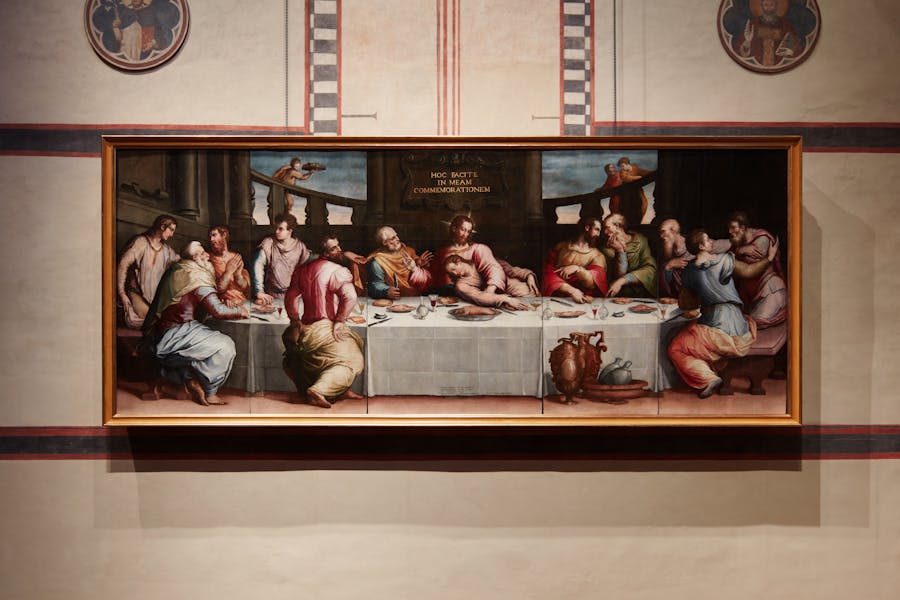
Giorgio Vasari's Last Supper
The restoration of Giorgio Vasari's Last Supper, one of the most astonishing operations to have taken place in recent years, was a result both of the Opera di Santa Croce's determination and of the persistency and technical skills of the Opificio delle Pietre Dure.

The painting, which spent many hours submerged beneath flood water in the museum in 1966, appeared to been damaged beyond repair. After being kept in storage for almost forty years while a lengthy phase of testing and research was being conducted, a restoration project with numerous technical innovations was finally put together.
The result was the recovery of the painting's complete readability, an achievement made possible by the interaction of a host of different professional skills and areas of expertise, and by the synergy between public- and private-sector institutions.
To cap the project, a system was designed to protect the work from the risk of flood damage by raising it using ancestral methods based on counterweights and pulleys.
These two videos illustrate the most important phases in the restoration process and the mechanism devised to raise the painting in the event of a flood warning.
Restoring Vasari's Last Supper
The return of Giorgio Vasari's Last Supper in Santa Croce and the mechanism devised to raise the painting in the Refectory